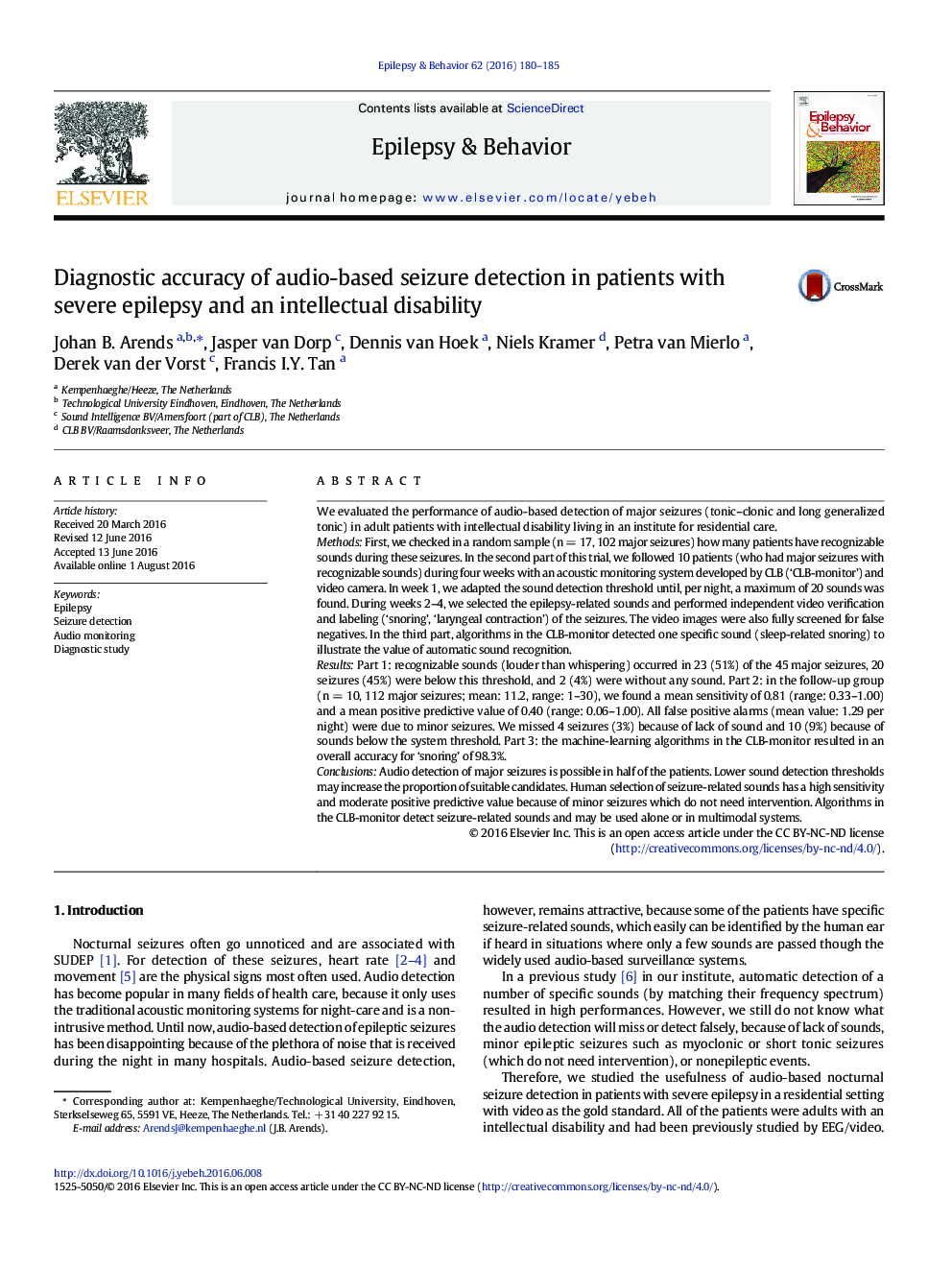| کد مقاله | کد نشریه | سال انتشار | مقاله انگلیسی | نسخه تمام متن |
|---|---|---|---|---|
| 6009787 | 1579829 | 2016 | 6 صفحه PDF | دانلود رایگان |
- Audio-based seizure detection is possible in half of the patients and more if the sound threshold is lowered
- Has a high sensitivity (0.81) and moderate positive predictive value (0.40) but shows a high interpatient variability
- Shows 'false positive' detections because of minor seizures which do not need intervention
- Is supported by a machine-learning algorithm (snoring detection accuracy = 0.98)
- May be used alone or in multimodal detection systems
We evaluated the performance of audio-based detection of major seizures (tonic-clonic and long generalized tonic) in adult patients with intellectual disability living in an institute for residential care.MethodsFirst, we checked in a random sample (n = 17, 102 major seizures) how many patients have recognizable sounds during these seizures. In the second part of this trial, we followed 10 patients (who had major seizures with recognizable sounds) during four weeks with an acoustic monitoring system developed by CLB ('CLB-monitor') and video camera. In week 1, we adapted the sound detection threshold until, per night, a maximum of 20 sounds was found. During weeks 2-4, we selected the epilepsy-related sounds and performed independent video verification and labeling ('snoring', 'laryngeal contraction') of the seizures. The video images were also fully screened for false negatives. In the third part, algorithms in the CLB-monitor detected one specific sound (sleep-related snoring) to illustrate the value of automatic sound recognition.ResultsPart 1: recognizable sounds (louder than whispering) occurred in 23 (51%) of the 45 major seizures, 20 seizures (45%) were below this threshold, and 2 (4%) were without any sound. Part 2: in the follow-up group (n = 10, 112 major seizures; mean: 11.2, range: 1-30), we found a mean sensitivity of 0.81 (range: 0.33-1.00) and a mean positive predictive value of 0.40 (range: 0.06-1.00). All false positive alarms (mean value: 1.29 per night) were due to minor seizures. We missed 4 seizures (3%) because of lack of sound and 10 (9%) because of sounds below the system threshold. Part 3: the machine-learning algorithms in the CLB-monitor resulted in an overall accuracy for 'snoring' of 98.3%.ConclusionsAudio detection of major seizures is possible in half of the patients. Lower sound detection thresholds may increase the proportion of suitable candidates. Human selection of seizure-related sounds has a high sensitivity and moderate positive predictive value because of minor seizures which do not need intervention. Algorithms in the CLB-monitor detect seizure-related sounds and may be used alone or in multimodal systems.
Journal: Epilepsy & Behavior - Volume 62, September 2016, Pages 180-185
